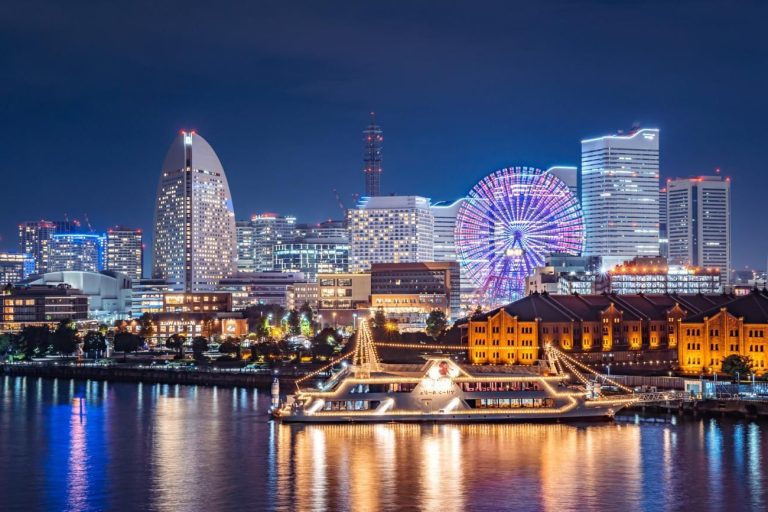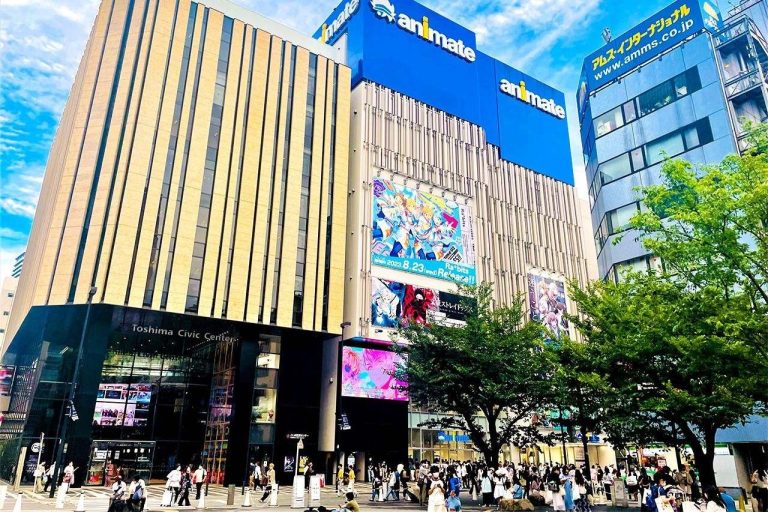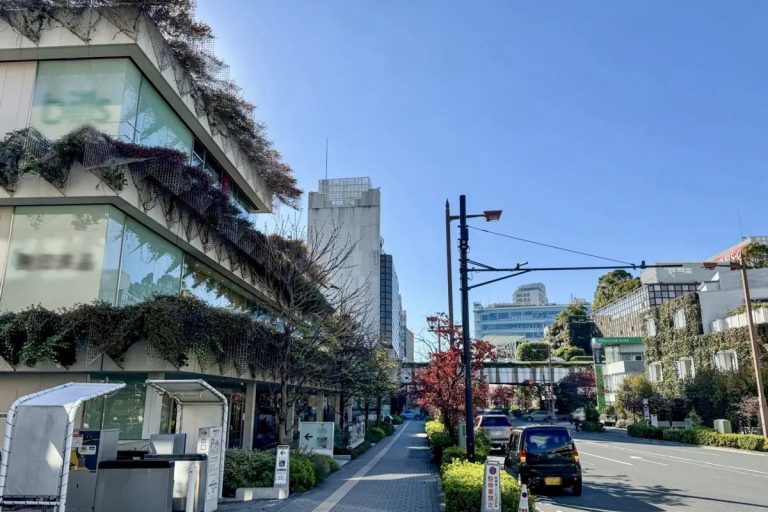Tokyo’s Neon-Lit Electronics Paradise
Akihabara stands as Tokyo’s most electrifying district, where towering neon signs illuminate streets packed with everything from cutting-edge gadgets to vintage gaming consoles. This bustling neighborhood has earned its reputation as the global epicenter of electronics retail and otaku culture, drawing millions of visitors annually who come seeking the latest tech innovations and anime merchandise.
The district pulses with energy from dawn to dusk, as crowds weave between multi-story electronics megastores and intimate specialty shops. Street vendors hawk everything from rare computer components to limited-edition figurines, while the constant hum of arcade machines creates an unmistakable soundtrack. What makes Akihabara truly special is how it seamlessly blends serious technology retail with playful pop culture, creating an atmosphere unlike anywhere else on Earth.
For first-time visitors, the sheer density of options can feel overwhelming. Every building seems to house multiple floors of shops, each specializing in different aspects of electronics or anime culture. Yet this complexity is part of Akihabara’s charm, rewarding those who take time to explore its hidden corners and discover unexpected treasures.
From Post-War Ruins to Pop Culture Capital
Historical Background
Akihabara’s transformation began in the aftermath of World War II, when the area emerged from destruction to become a hub for black market electronics trading. The district’s strategic location near major railway lines made it an ideal meeting point for merchants and customers seeking hard-to-find electronic components and radio parts.
During the 1950s, small shops began clustering around Akihabara Station, specializing in radio repair and electronic components. These early entrepreneurs laid the foundation for what would eventually become the world’s most famous electronics district, establishing a culture of technical expertise and customer service that continues today.
Transition to Electronics Hub
The 1960s marked Akihabara’s golden age as Japan’s economic miracle fueled demand for consumer electronics. Major retailers like Yodobashi Camera established flagship stores, while smaller specialty shops proliferated throughout the district. The area became synonymous with cutting-edge technology, from the first transistor radios to early personal computers.
By the 1980s, Akihabara had evolved into a comprehensive electronics ecosystem where customers could find everything from individual resistors to complete home entertainment systems. The district’s reputation for competitive pricing and technical knowledge attracted both domestic and international buyers, cementing its status as Asia’s electronics capital.
Impact of Anime and Manga
The 1990s brought a cultural revolution as anime and manga began infiltrating Akihabara’s electronics-focused landscape. Shops dedicated to anime merchandise opened alongside traditional electronics retailers, while gaming arcades expanded to include anime-themed attractions. This fusion created the unique otaku culture that defines modern Akihabara.
The rise of personal computers and gaming consoles accelerated this transformation, as the line between technology and entertainment blurred. Today’s Akihabara reflects this evolution, where visitors can purchase professional audio equipment in the morning and hunt for rare anime figurines in the afternoon.
Must-Visit Destinations for Every Interest
Electronics Shops
Akihabara’s electronics retailers range from massive department stores to tiny specialist shops tucked into narrow alleys. The largest stores occupy entire city blocks, with each floor dedicated to different product categories. Customers can spend hours browsing through sections devoted to audio equipment, computer components, cameras, and mobile devices.
Smaller shops often specialize in specific niches, such as vintage audio equipment or rare electronic components. These establishments frequently employ staff with deep technical knowledge who can provide expert advice and custom solutions. Many shops also offer repair services, maintaining Akihabara’s tradition of technical expertise.
Otaku Culture Spots
The heart of Akihabara’s anime culture centers around several key buildings that house multiple floors of specialized shops. Radio Kaikan stands as perhaps the most famous, with eight floors dedicated to anime, manga, and gaming merchandise. Each floor caters to different interests, from mainstream anime to niche collectibles.
These cultural hubs serve as gathering places for fans, where limited-edition releases create excitement and long queues. Staff members often share the same passions as their customers, creating an atmosphere of shared enthusiasm that extends beyond simple retail transactions.
Maid Cafés
Maid cafés represent one of Akihabara’s most distinctive attractions, where servers dressed in Victorian-inspired maid costumes create a fantasy dining experience. These establishments range from family-friendly venues to more specialized locations catering to specific interests. Many offer English-speaking staff to accommodate international visitors.
The experience extends beyond simple dining, with many cafés featuring interactive elements like games, performances, and photo opportunities. Prices typically reflect the entertainment value, with cover charges and special menu items that contribute to the overall experience.
Retro Gaming Stores
Super Potato stands among Akihabara’s most beloved retro gaming destinations, offering multiple floors packed with vintage consoles, rare cartridges, and gaming memorabilia. The store’s carefully curated selection spans decades of gaming history, from early arcade machines to modern collectibles.
These specialized retailers serve both serious collectors and casual gamers, with knowledgeable staff who can authenticate rare items and provide historical context. Many stores also feature playable displays where customers can test vintage games before purchasing.
Themed Stores
Akihabara hosts numerous themed stores that cater to specific fandoms and interests. Don Quijote’s Akihabara location exemplifies this approach, with floors dedicated to anime merchandise, costumes, and novelty items. These stores often stay open late, accommodating visitors who prefer to shop during evening hours.
Gamers, another major themed retailer, focuses specifically on anime and gaming merchandise. The store’s multiple floors organize products by franchise and medium, making it easy for fans to find items related to their favorite series.
Shopping Strategies and Hidden Gems
Major Electronics Retailers
Yodobashi Camera dominates Akihabara’s retail landscape with its massive multimedia tower that serves as a one-stop destination for electronics shopping. The store’s nine floors cover everything from smartphones and cameras to home appliances and gaming equipment. Tax-free shopping and multilingual staff make it particularly popular with international visitors.
The store’s competitive pricing and extensive warranty programs have made it a trusted destination for both casual shoppers and professional buyers. Regular sales events and seasonal promotions provide additional value, while the store’s point system rewards frequent customers.
Anime and Manga Shops
Mandarake represents the pinnacle of anime and manga retail, with multiple locations throughout Akihabara specializing in different aspects of otaku culture. The main store spans several floors, each dedicated to specific categories like rare manga, vintage toys, or limited-edition figurines.
The store’s buying and selling system creates a dynamic inventory that changes regularly, rewarding frequent visitors who develop relationships with staff members. Prices range from affordable to collector-level, accommodating fans with different budgets and interests.
Collectibles and Merchandise
Akihabara’s collectibles market extends far beyond simple retail, encompassing everything from vintage toys to limited-edition artwork. Many shops specialize in specific franchises or time periods, creating micro-communities of dedicated collectors who share knowledge and trade rare items.
The district’s density allows for comparison shopping, with multiple stores often carrying similar items at different prices. Savvy shoppers learn to navigate this landscape, developing relationships with shop owners who can alert them to new arrivals and special deals.
Entertainment Beyond Shopping
Anime Song Dance Parties
Club Mogra has established itself as Akihabara’s premier venue for anime song dance parties, hosting weekend events that attract fans from across Tokyo and beyond. The club’s specialized sound system and lighting create an immersive environment where anime music takes center stage.
Entry fees typically range from 2,000 to 3,000 yen, with age restrictions limiting attendance to those over 18. The club’s programming includes both popular anime themes and obscure tracks, creating a diverse musical experience that appeals to different levels of fandom.
Arcade Gaming
Akihabara’s gaming arcades represent some of Tokyo’s most advanced and diverse gaming facilities. Multi-story complexes house hundreds of machines, from classic fighting games to cutting-edge rhythm games and prize-winning crane games. Many arcades stay open late into the night, accommodating both casual players and serious competitors.
The competitive gaming scene thrives in these venues, with regular tournaments and ranking systems that create communities around specific games. Staff members often provide tips and strategies, helping newcomers improve their skills and enjoy the full arcade experience.
Kanda Myojin Shrine
Kanda Myojin Shrine provides a spiritual counterpoint to Akihabara’s technological focus, offering visitors a chance to experience traditional Japanese culture within the modern district. The shrine’s beautiful architecture and peaceful gardens create a stark contrast to the bustling electronics shops just steps away.
The shrine hosts the famous Kanda Matsuri festival every two years, one of Tokyo’s three great festivals. This celebration brings traditional Japanese culture into direct contact with Akihabara’s modern identity, creating a unique cultural fusion that reflects Japan’s ability to honor both tradition and innovation.
Getting There and Moving Around
Train Lines and Stations
Akihabara Station serves as a major transportation hub, with multiple train lines providing easy access from anywhere in Tokyo. The JR Yamanote Line offers direct connections to major destinations like Shibuya nightlife and shopping districts, while the Keihin-Tohoku Line provides access to areas like Ueno museums and park attractions.
The Tokyo Metro Hibiya Line also stops at Akihabara, creating additional connectivity options for visitors staying in different parts of the city. Station exits are clearly marked and lead directly into the heart of the electronics district, making navigation straightforward even for first-time visitors.
Nearby Attractions
Akihabara’s central location makes it an ideal base for exploring other Tokyo districts. Asakusa temples and markets lie just a short train ride away, offering visitors a chance to experience traditional Japanese culture alongside modern electronics shopping. The contrast between these districts highlights Tokyo’s incredible diversity.
Ueno museums and park facilities provide another nearby cultural option, while the historic significance of both areas creates opportunities for visitors to understand different aspects of Tokyo’s development and cultural heritage.
Where to Stay in Electric Town
Budget Options
Akihabara offers several budget-friendly accommodation options that cater to travelers seeking basic comfort and convenience. Capsule hotels provide a uniquely Japanese experience while keeping costs low, with many featuring modern amenities like individual entertainment systems and high-speed internet access.
Hostels and guesthouses in the area often cater specifically to international visitors, with multilingual staff and cultural orientation services. These establishments frequently organize group activities and provide local recommendations, helping budget travelers maximize their Akihabara experience.
Mid-Range Hotels
MONday Apart Premium Akihabara represents the mid-range category with apartment-style accommodations that provide more space and amenities than budget options. These hotels often feature kitchenettes, separate living areas, and business facilities that appeal to both leisure and business travelers.
The mid-range category typically includes hotels with themed decorations that reflect Akihabara’s unique culture, creating an immersive experience that extends beyond simple accommodation. Many offer special packages that include shopping discounts or cultural experiences.
Luxury Stays
NOHGA HOTEL Akihabara Tokyo exemplifies the luxury accommodation category, combining high-end amenities with design elements that celebrate the district’s cultural significance. These hotels often feature specialized concierge services that can arrange exclusive shopping experiences or cultural activities.
JR East Hotel Mets Premier Akihabara provides another luxury option with direct station connections and premium dining facilities. The hotel’s location and amenities make it particularly appealing to travelers who want to experience Akihabara’s energy while enjoying sophisticated comfort and service.
The Cultural Impact of Electric Town
Impact on Japanese Pop Culture
Akihabara has fundamentally shaped how Japanese pop culture develops and spreads throughout the world. The district serves as both a testing ground for new trends and a preservation site for cultural artifacts, creating a unique ecosystem where past and future coexist.
The concentration of fans, creators, and retailers in one location has accelerated the development of new subcultures and artistic movements. This density effect allows for rapid feedback and iteration, helping Japanese pop culture maintain its innovative edge and global appeal.
Role in Global Otaku Culture
As anime and manga gained international popularity, Akihabara became a pilgrimage destination for fans worldwide. The district’s shops, cafés, and entertainment venues now cater specifically to international visitors, creating a global community centered around Japanese pop culture.
This international influence has also flowed back into Japanese culture, as global trends and preferences influence what products and experiences Akihabara offers. The result is a truly international cultural space that represents the best of both Japanese creativity and global fandom.
Technological Innovation and Trends
Akihabara continues to serve as a showcase for cutting-edge technology, from the latest consumer electronics to experimental prototypes. The district’s retailers often receive new products before they become available elsewhere, making it a barometer for technological trends.
The integration of technology with entertainment and culture has created new categories of products and experiences that blur traditional boundaries. This innovation continues to influence how technology companies worldwide approach product development and marketing.
Diversity of Subcultures
The district hosts an incredible variety of subcultures, each with its own dedicated shops, gathering places, and community events. This diversity creates a rich cultural tapestry where different interests and passions can coexist and cross-pollinate.
From hardcore gamers to casual anime fans, from professional musicians to weekend cosplayers, Akihabara provides spaces and resources for every level of interest and involvement. This inclusivity has become one of the district’s defining characteristics and a key factor in its continued relevance.
Frequently Asked Questions
What is Akihabara known for?
Akihabara is known as Tokyo’s center for electronics and otaku culture, featuring a wide range of technology products and anime merchandise.
How did Akihabara develop its unique culture?
Akihabara evolved from a post-war black market for electronics into a vibrant district that combines technology with anime and gaming, influenced by Japan’s economic growth and cultural trends.
What are some must-visit places in Akihabara?
Must-visit places include Yodobashi Camera for electronics, Radio Kaikan for anime merchandise, Super Potato for retro gaming, and various themed cafés.
How can I get to Akihabara?
Akihabara Station is accessible via several train lines, including the JR Yamanote Line and the Tokyo Metro Hibiya Line, making it easy to reach from various parts of Tokyo.
What types of accommodations are available in Akihabara?
Akihabara offers a range of accommodations from budget capsule hotels and hostels to mid-range apartments and luxury hotels.
Exploring the Heart of Tokyo’s Otaku Culture
Akihabara remains a dynamic representation of the intersection between technology and pop culture, attracting millions of visitors eager to experience its unique offerings. Whether you’re searching for the latest gadgets, rare collectibles, or simply wish to immerse yourself in the vibrant atmosphere, Akihabara promises an unforgettable experience that continues to evolve with each passing year.





